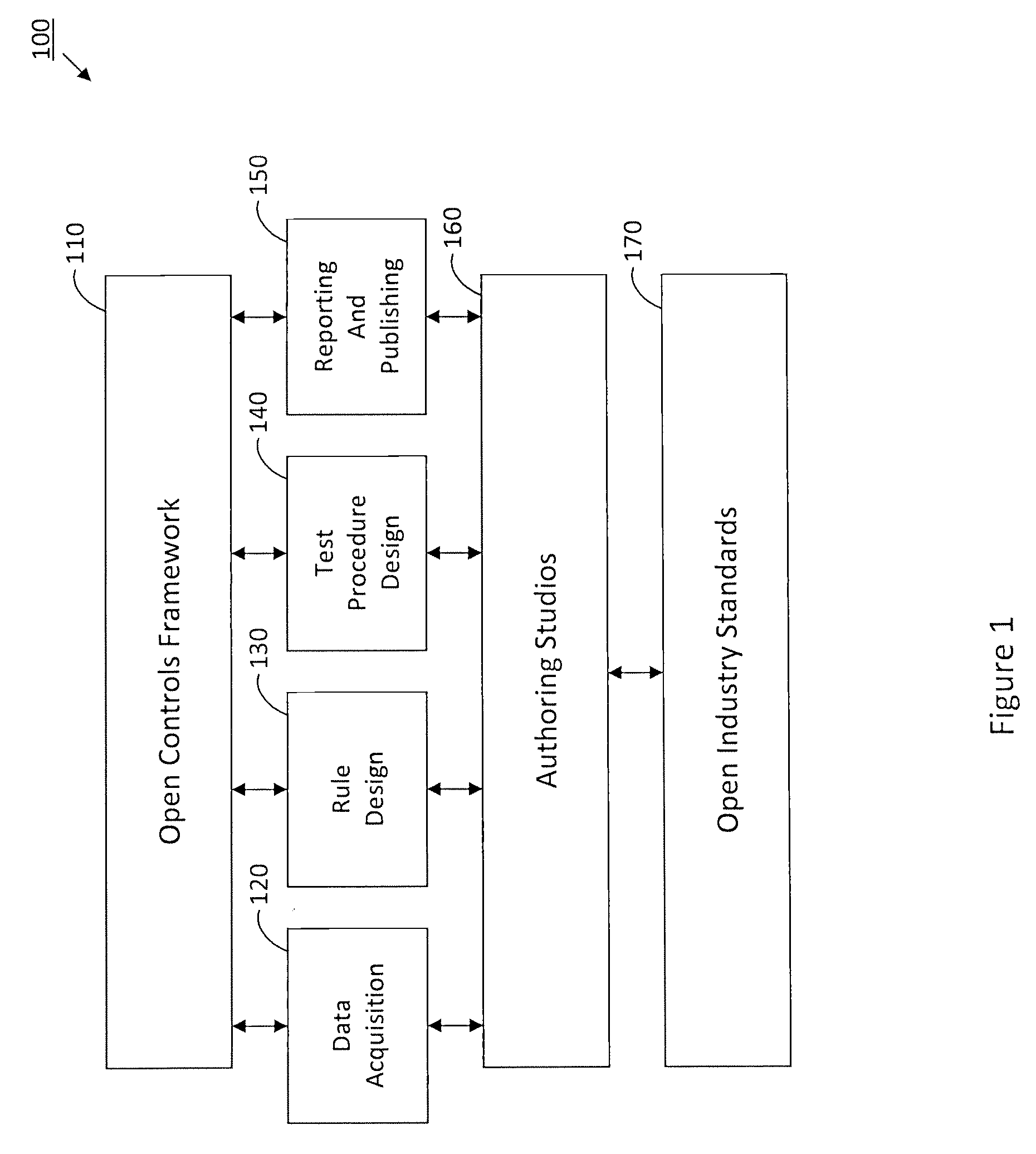System and method for managing controls within a heterogeneous enterprise environment
a business environment and management control technology, applied in the field of open and extensible frameworks for managing business controls within a heterogeneous enterprise environment, can solve the problems of large manpower, tedious manual processes, other costly and time-consuming approaches, and the system and application used by any given organization, which may be highly heterogeneous, so as to reduce audit and compliance costs, facilitate correlation, and improve communication
- Summary
- Abstract
- Description
- Claims
- Application Information
AI Technical Summary
Benefits of technology
Problems solved by technology
Method used
Image
Examples
Embodiment Construction
[0023]According to various aspects of the invention, as illustrated in FIG. 1, for example, an open controls architecture 100 may be used to manage controls in a heterogeneous enterprise environment. Architecture 100 may be used to create, monitor, test, or otherwise manage internal controls by capturing, organizing, translating, and exchanging controls data, tests, and test results across organizational boundaries and between an enterprise and its external auditors. As such, open controls architecture 100 may provide an automated software solution for managing enterprise controls, thus enabling business, finance, information technology (IT), audit, or other professionals to automate on-demand testing and perform closed-loop remediation and continuous exception-based monitoring of controls within and across enterprise systems.
[0024]Open controls architecture 100 may include open controls framework 110, which may be based upon one or more open industry standards 170. By integrating v...
PUM
 Login to View More
Login to View More Abstract
Description
Claims
Application Information
 Login to View More
Login to View More - R&D
- Intellectual Property
- Life Sciences
- Materials
- Tech Scout
- Unparalleled Data Quality
- Higher Quality Content
- 60% Fewer Hallucinations
Browse by: Latest US Patents, China's latest patents, Technical Efficacy Thesaurus, Application Domain, Technology Topic, Popular Technical Reports.
© 2025 PatSnap. All rights reserved.Legal|Privacy policy|Modern Slavery Act Transparency Statement|Sitemap|About US| Contact US: help@patsnap.com



